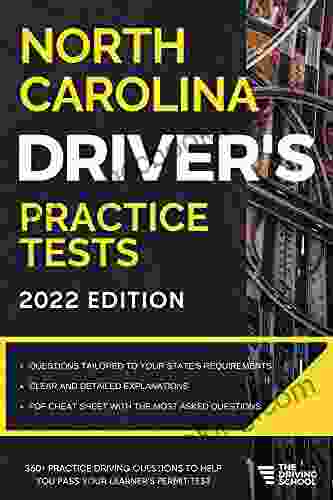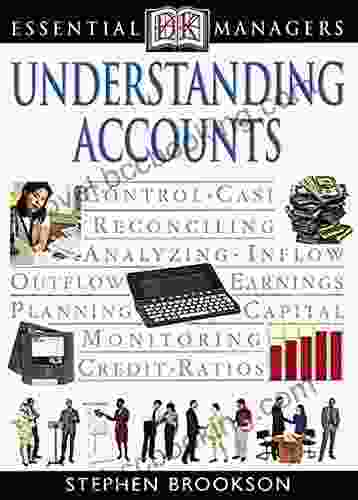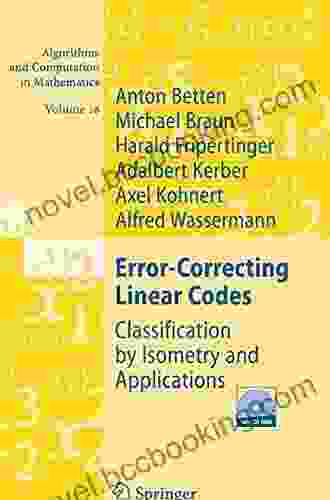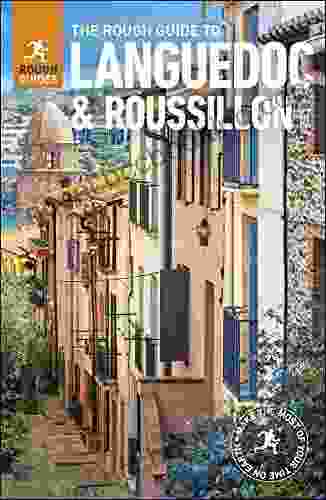Unveiling the Secrets of Error Correcting Linear Codes: A Comprehensive Guide

4 out of 5
| Language | : | English |
| File size | : | 16092 KB |
| Print length | : | 827 pages |
| Screen Reader | : | Supported |
In the realm of digital communication, ensuring the integrity and reliability of data is paramount. Error correcting codes (ECCs) play a vital role in this endeavor by detecting and correcting errors that inevitably arise during data transmission and storage. Among the various types of ECCs, linear codes have gained widespread adoption due to their efficiency and effectiveness.
This article delves into the fascinating world of error correcting linear codes, exploring their history, properties, and applications. We will unravel the intricacies of these codes and shed light on their significance in the digital age.
History of Linear Codes
The genesis of linear codes can be traced back to the seminal work of Richard Hamming in 1950. Hamming, while working at Bell Labs, developed a groundbreaking code known as the Hamming code, which was instrumental in detecting and correcting single-bit errors in data transmissions.
In the years that followed, other notable mathematicians and researchers made significant contributions to the field of linear codes. BCH codes, named after Bose, Chaudhuri, and Hocquenghem, expanded the scope of error detection and correction to multiple-bit errors. Reed-Solomon codes, developed by Irving Reed and Gustave Solomon, became widely adopted in various applications, including telecommunications and data storage.
Properties of Linear Codes
Error correcting linear codes exhibit several fundamental properties that make them highly effective in data protection.
- Linearity: Linear codes are linear vector spaces over a finite field, typically GF(2) or GF(q).
- Hamming Distance: The Hamming distance between two codewords measures the number of bit positions at which they differ. It is a crucial parameter for determining the code's error detection and correction capabilities.
- Code Rate: The code rate is the ratio of the number of information bits to the total number of codeword bits. It reflects the efficiency of the code in transmitting data.
Decoding Algorithms for Linear Codes
Decoding algorithms play a critical role in error correcting linear codes. These algorithms enable the recovery of original information bits from corrupted codewords.
Notable decoding algorithms include:
- Maximum Likelihood Decoding: An optimal decoding algorithm that finds the codeword most likely to have produced the corrupted codeword.
- Hard-Decision Decoding: A simpler decoding algorithm that operates on hard-decision channels, where received symbols are either 0 or 1.
- Soft-Decision Decoding: A more advanced decoding algorithm that leverages additional information about the reliability of received symbols.
Applications of Error Correcting Linear Codes
Error correcting linear codes find widespread application in diverse areas of digital communication and data storage:
- Telecommunications: ECCs are essential for ensuring reliable data transmission over noisy channels, such as satellite links and wireless networks.
- Data Storage: ECCs are employed in storage systems, including hard disk drives and solid-state drives, to protect data from errors introduced during read/write operations.
- Medical Imaging: ECCs enhance the quality and accuracy of medical images by detecting and correcting errors that may occur during transmission or storage.
- Barcodes: ECCs are incorporated into barcodes to ensure accurate data capture, even when the barcode is damaged or degraded.
Error correcting linear codes are indispensable tools in the digital world, safeguarding the integrity and reliability of data transmissions and storage. They have revolutionized the field of telecommunications and continue to play a vital role in various applications.
This article provided a comprehensive overview of error correcting linear codes, covering their history, properties, decoding algorithms, and applications. With advancements in technology, we can anticipate further development and optimization of these codes, ensuring the seamless and reliable flow of information in the digital age.
If you are interested in delving deeper into the fascinating realm of error correcting linear codes, I highly recommend the following resources:
- Error Correcting Linear Codes: Theory and Practice by P. Solé, M. Bargallo, and L. M. Planas
- Error Correcting Codes by J. Kleinberg and É. Tardos
- Error Control Codes for Engineers by J. J. Cain, P. E. Haskell, and R. M. Gagliardi
May this exploration of error correcting linear codes inspire you to uncover the secrets behind the reliable transfer of information in the digital world.
4 out of 5
| Language | : | English |
| File size | : | 16092 KB |
| Print length | : | 827 pages |
| Screen Reader | : | Supported |
Do you want to contribute by writing guest posts on this blog?
Please contact us and send us a resume of previous articles that you have written.
 Book
Book Novel
Novel Page
Page Chapter
Chapter Text
Text Story
Story Genre
Genre Reader
Reader Library
Library Paperback
Paperback E-book
E-book Magazine
Magazine Newspaper
Newspaper Paragraph
Paragraph Sentence
Sentence Bookmark
Bookmark Shelf
Shelf Glossary
Glossary Bibliography
Bibliography Foreword
Foreword Preface
Preface Synopsis
Synopsis Annotation
Annotation Footnote
Footnote Manuscript
Manuscript Scroll
Scroll Codex
Codex Tome
Tome Bestseller
Bestseller Classics
Classics Library card
Library card Narrative
Narrative Biography
Biography Autobiography
Autobiography Memoir
Memoir Reference
Reference Encyclopedia
Encyclopedia Salvador Briggman
Salvador Briggman Dan Anderson
Dan Anderson Robert Matzen
Robert Matzen William Warren
William Warren Robert C Renneberg
Robert C Renneberg Randy Baker
Randy Baker Ruri Hazuki
Ruri Hazuki Willow Cross
Willow Cross Ronald Rees
Ronald Rees Sania Sharawi Lanfranchi
Sania Sharawi Lanfranchi Tom Jackson
Tom Jackson Richard W Hamming
Richard W Hamming William F Keegan
William F Keegan Renee Rose
Renee Rose Thao Te
Thao Te Ram Oren
Ram Oren Tiziano Bellini
Tiziano Bellini Silvia Lopez
Silvia Lopez Smashing Magazine
Smashing Magazine Joshua Wright
Joshua Wright
Light bulbAdvertise smarter! Our strategic ad space ensures maximum exposure. Reserve your spot today!

 Bret MitchellEscape to The Beach House: A Thrilling Thriller Novel That Will Leave You on...
Bret MitchellEscape to The Beach House: A Thrilling Thriller Novel That Will Leave You on...
 Harvey BellOwn Your Power: The Ultimate Guide to Navigating the World of Toxic People,...
Harvey BellOwn Your Power: The Ultimate Guide to Navigating the World of Toxic People,... Walter SimmonsFollow ·5.2k
Walter SimmonsFollow ·5.2k George R.R. MartinFollow ·18.7k
George R.R. MartinFollow ·18.7k Johnny TurnerFollow ·7.6k
Johnny TurnerFollow ·7.6k Sammy PowellFollow ·17.6k
Sammy PowellFollow ·17.6k Henry HayesFollow ·6.2k
Henry HayesFollow ·6.2k Alfred RossFollow ·5.5k
Alfred RossFollow ·5.5k Clarence BrooksFollow ·6.4k
Clarence BrooksFollow ·6.4k Dylan HayesFollow ·11.1k
Dylan HayesFollow ·11.1k

 Steven Hayes
Steven HayesEmbark on Unforgettable Adventures: Discover the Best of...
Unveiling the Enchanting Trails of the...

 Jarrett Blair
Jarrett BlairMaster the Road: Ace Your North Carolina Driver's Test...
Unlock the Secrets to...

 Brent Foster
Brent FosterDk Essential Managers Understanding Accounts: Your...
In today's...

 Isaac Mitchell
Isaac MitchellPrognosis: A Memoir of My Brain - A Journey of Hope and...
In 2013, Eve Ensler was diagnosed with a...
4 out of 5
| Language | : | English |
| File size | : | 16092 KB |
| Print length | : | 827 pages |
| Screen Reader | : | Supported |












